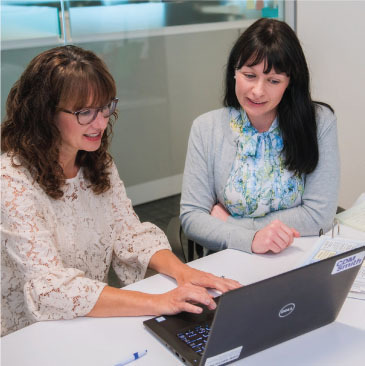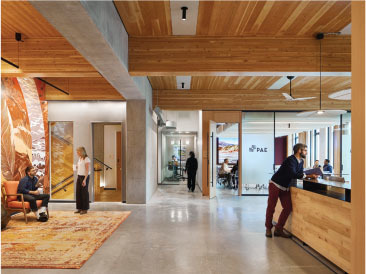March/April 2018
Communities: Private Practice
Engage Your Young Engineers Using ‘Passiontivity’
BY SHIRA HARRINGTON
 Today’s engineering professionals want far more from their employer than long-term stability, which was the primary motivator for the older generation of engineers who looked forward to a pension plan at the end of their 35-year tenure. Younger engineers seek careers that generate passion, not just a paycheck. They want to do meaningful work and feel valued for who they are, not just for what they produce. In an increasingly competitive architecture and engineering market, this may seem a counterproductive reality check for some firm leaders, but unless you intentionally focus on what truly engages your young engineers, they’ll express their frustrations by checking out.
Today’s engineering professionals want far more from their employer than long-term stability, which was the primary motivator for the older generation of engineers who looked forward to a pension plan at the end of their 35-year tenure. Younger engineers seek careers that generate passion, not just a paycheck. They want to do meaningful work and feel valued for who they are, not just for what they produce. In an increasingly competitive architecture and engineering market, this may seem a counterproductive reality check for some firm leaders, but unless you intentionally focus on what truly engages your young engineers, they’ll express their frustrations by checking out.
Walk a Mile in Your Young Engineer’s Career Journey
Raise the engagement factor by empathizing and considering what engages you in your career. How do you feel when you use knowledge and skills you truly enjoy? Probably energized to the point where it doesn’t feel like work at all.
Now think about projects for which you’re quite skilled but not particularly motivated. Sure, you won’t complain (at least not aloud) but it doesn’t exactly compel discretionary effort. Moreover, if someone tried to promote you in those areas, not only would you turn them down, but you also might leave the company altogether.
Consider the skills that you’ve dreamed about developing. The ones for which you find yourself actively researching the latest TED talk or peeking over the shoulder of that colleague who gets to use those skills every day.
Finally, mull over the job functions that really disengage you. The ones for which you’re not skilled and certainly not motivated to learn. Even if they comprise 5% of your workload, you’ll find every excuse to procrastinate and, even then, probably won’t do a very good job.
Ask Your Employee to Guide You Along Their Actual Career Path
Here’s a tool I call “Passiontivity” to help you learn how your employees feel about each of the areas described above. Every six months or so, initiate a conversation with your direct reports in which they can openly share their feelings about aspects of their projects in a safe environment.
The Passiontivity Exercise
Ask employees to create four quadrants on a sheet of paper (see the passiontivity exercise quadrant below). Then explain to them each section as follows:
High Skill/High Motivation (top left section)—These are skills that highly engage you. You love this work so much that if you were independently wealthy and didn’t need the paycheck, you’d still do this work.
High Skill/Low Motivation (bottom left quadrant)—These are skills that you know you’re capable of doing but they don’t energize you. You’ll probably never complain about doing this work, but you’d rather delegate it to someone else.
High Motivation/Low Skill (top right quadrant)—These are skills that you’d love to develop if you had the chance through some formal training or participating in a cross-functional project.
Low Skill/Low Motivation (bottom right quadrant)—These are skills that aren’t your natural strengths and really drain you.
Here are a few instructions that will help facilitate a robust conversation:
- Ask employees to list hard skills (job functions), not soft skills (behavioral attributes) so that you understand their likes and dislikes.
- Inform them that the left two quadrants, “high skills,” will likely have more content than the right quadrants, because people tend to work to their strengths.
- Ask them not to overthink it and be authentic.
Once they’ve completed the 10-minute assignment, ask your employees to discuss 1) each skill, explaining why they do or don’t enjoy doing it; and 2) examples of times when they felt particularly engaged or disengaged. Then actively notice their body language and tone of voice.
The bottom line is that when you ask young engineers what they want to do, rather than simply what they’re capable of, you’ll be able to realign their roles so they accomplish more of your organizational goals with enthusiasm.
Shira Harrington is the founder and president of Purposeful Hire, a career consulting and recruitment services firm. She can be reached at [email protected].


 Volunteering at NSPE is a great opportunity to grow your professional network and connect with other leaders in the field.
Volunteering at NSPE is a great opportunity to grow your professional network and connect with other leaders in the field. The National Society of Professional Engineers (NSPE) encourages you to explore the resources to cast your vote on election day:
The National Society of Professional Engineers (NSPE) encourages you to explore the resources to cast your vote on election day:







